By Dan Weisz
A new acquaintance invited me to visit the Skyline Country Club golf course to look at the birds there. The course closes to golfers every Monday so people use the course then for walking, jogging and dog-walking. It was fun visiting there and seeing the wonderful wildlife that lives both on the course and the adjacent desert habitat. One of the more conspicuous birds was the many Vermilion Flycatchers.
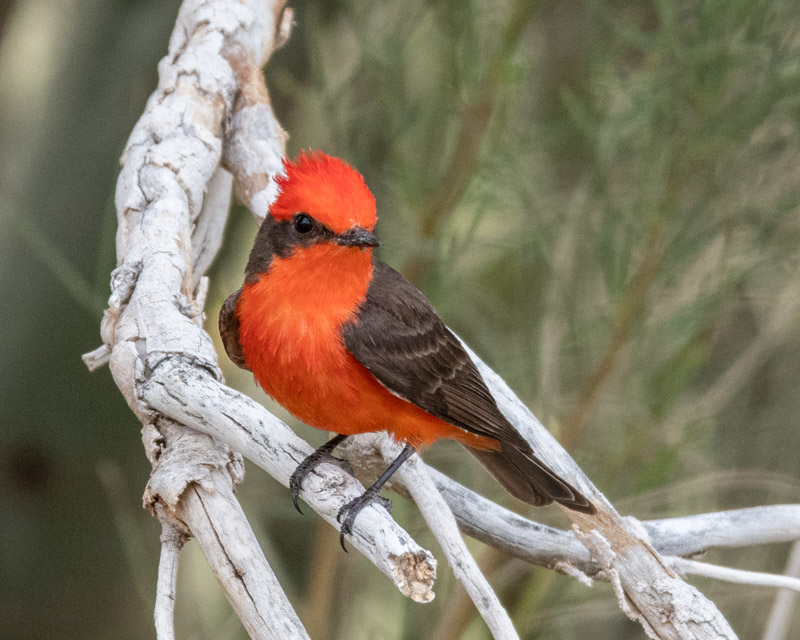
Cornell’s Allaboutbirds.org website describes this species as “A feathered ember in a desert landscape, the male Vermilion Flycatcher is exactly what its name says: a brilliant red bird that hawks flying insects from conspicuous perches atop shrub tops and fences”….and even atop saguaro cacti if the perches are in the right spots!!
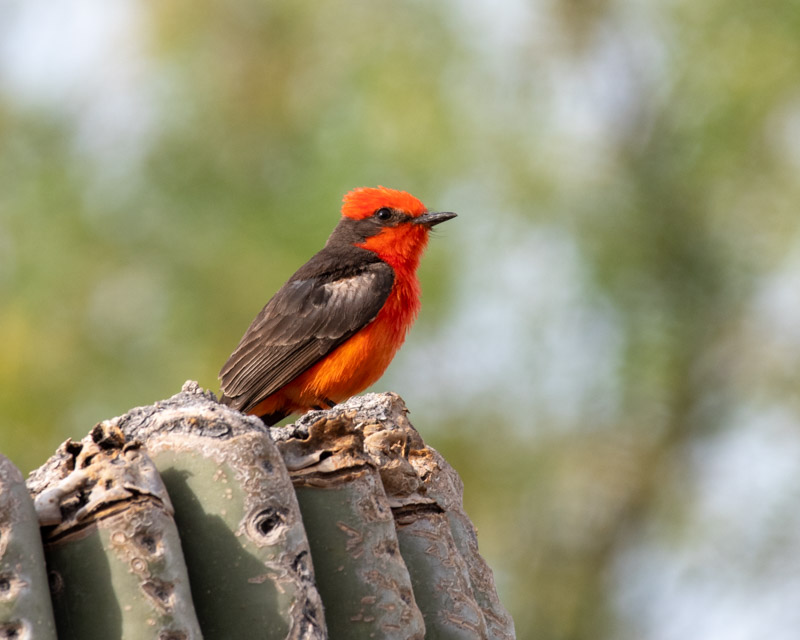
The Vermilion Flycatcher’s genus name, Pyrocephalus, literally translates to “fire-headed.” They are indeed!
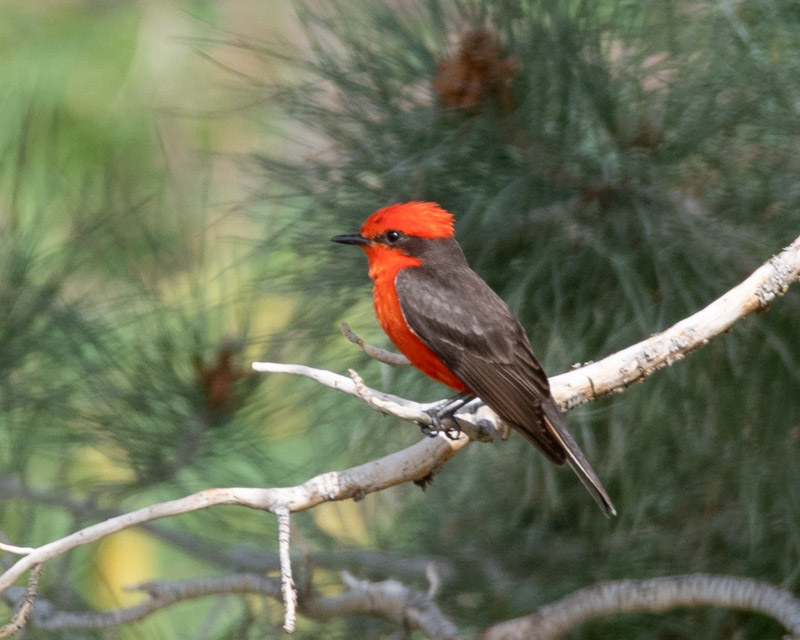
Vermilions, both male and female, sit on exposed perches making them easy to spot in their open country habitat. In Tucson, they are easy to find along the edges of any field, golf course, park, playground and open space.
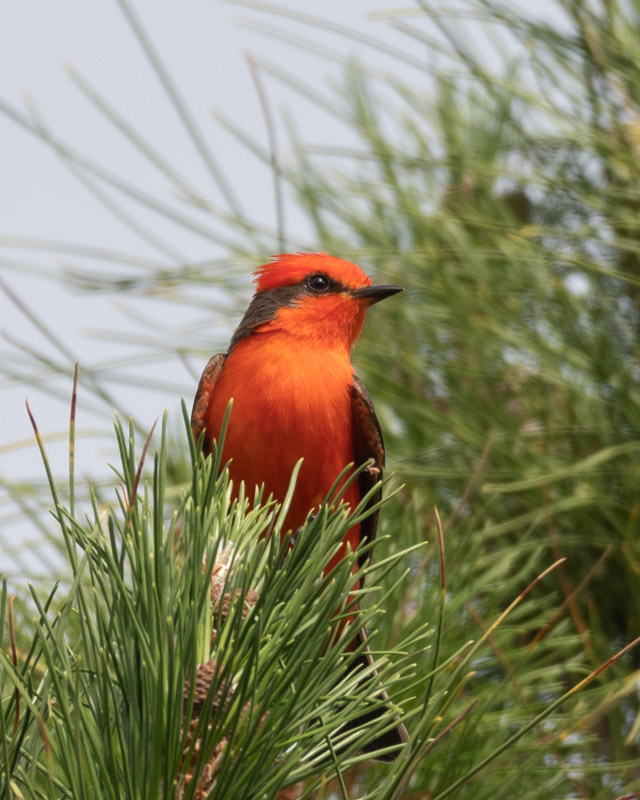
Vermilion Flycatchers are another of the many US birds seen primarily in the Southwest and their territories extend all the way south through Central America and much of South America.
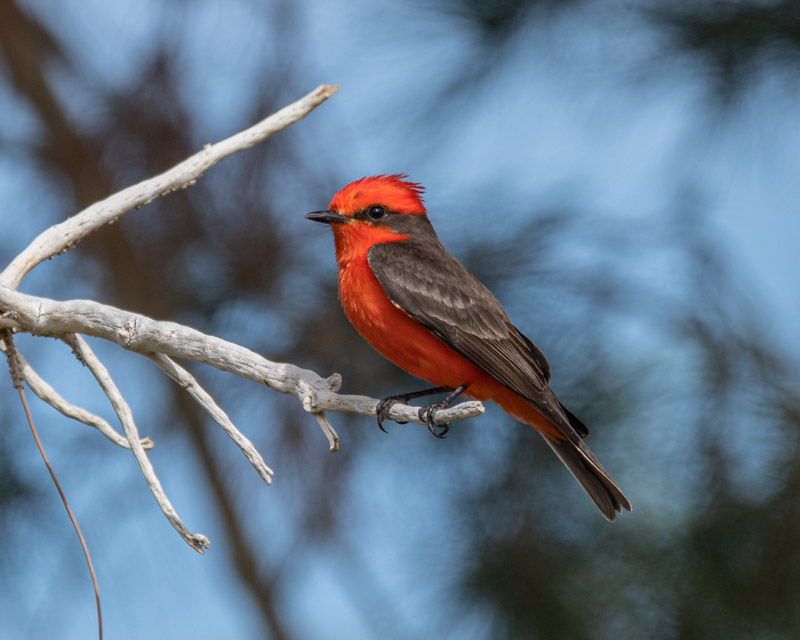
Vermilion Flycatchers eat mostly flying insects. They capture insects on the wing by taking off suddenly from an exposed perch like the ones in these pictures. Those foraging flights are often short and direct, involving a swift attacking swoop that takes them in a looping circle out and back to the same perch.
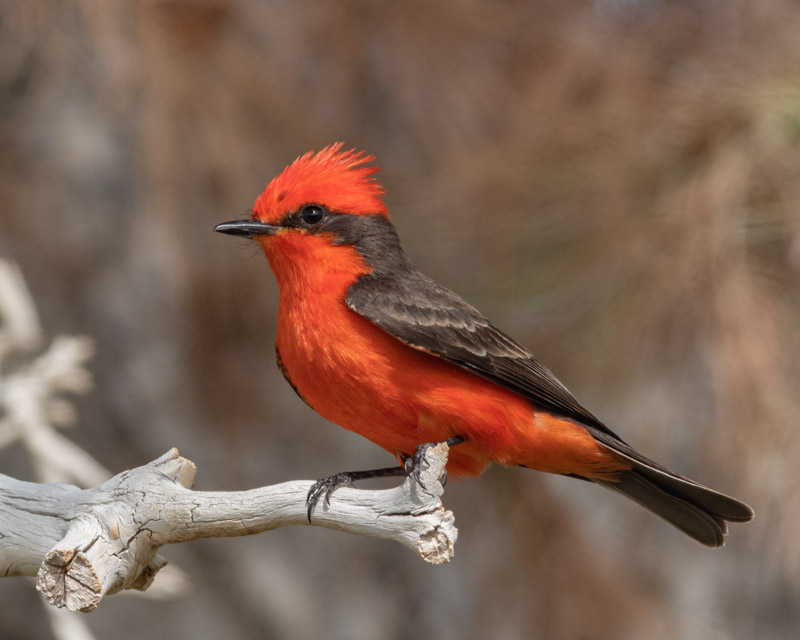
Of course, Birdnote has done a short piece on these beautiful birds: https://www.birdnote.org/show/vermilion-flycatcher
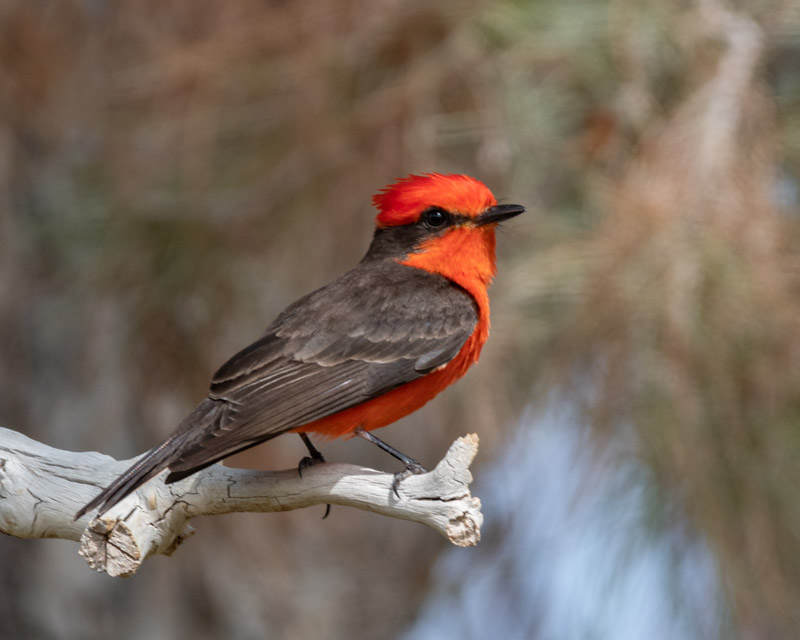
Sometimes they do perch very high, but usually they are on perches about ten feet off the ground. The bird below might not be hunting from this high but might just be looking to ensure no other male enters his territory.
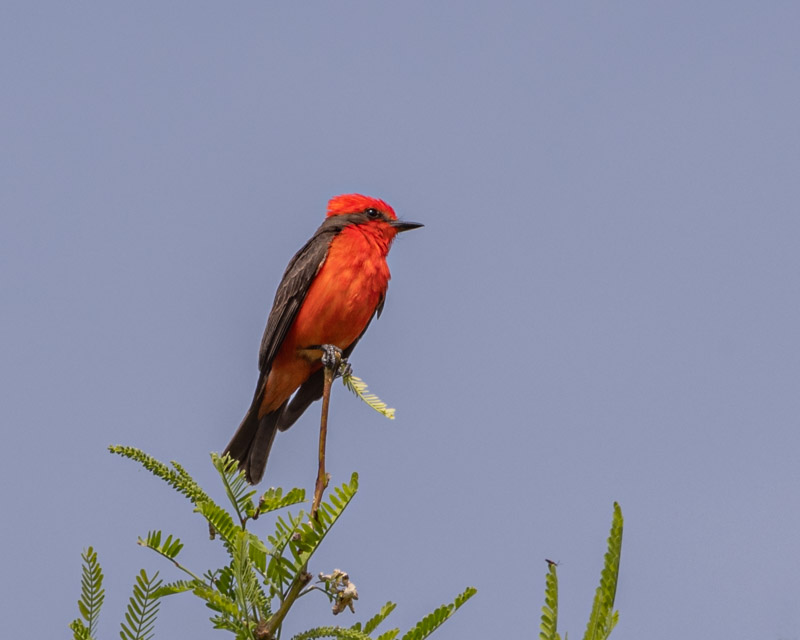
These photos are of a number of males that we saw throughout the golf course as it meandered through the neighborhood. The bird in the next photo seemed to spot an insect, cocking its head to get a better bead on its prey.
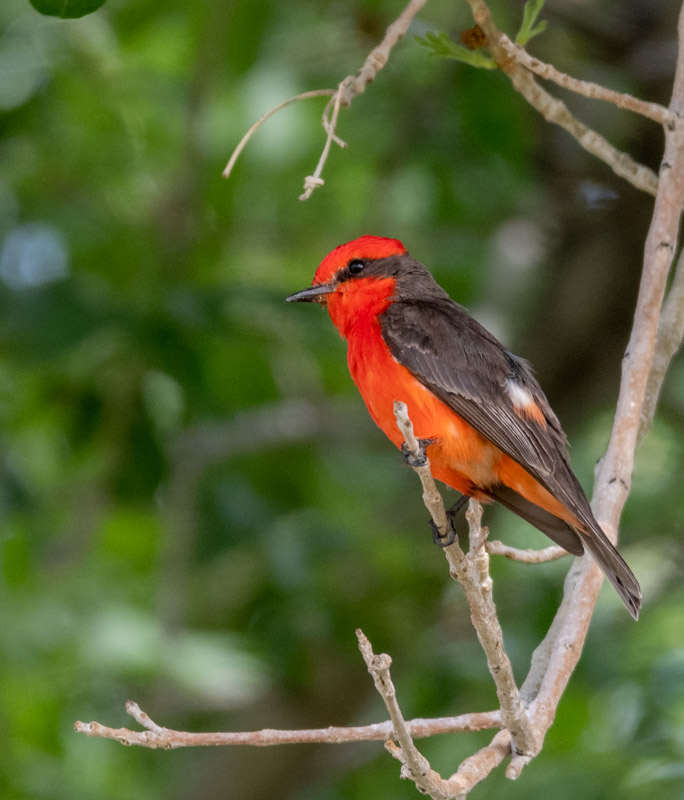
As all birds do, the Vermilions will preen all day long and work to put their feathers in place. These tail-feathers look special all spread out.
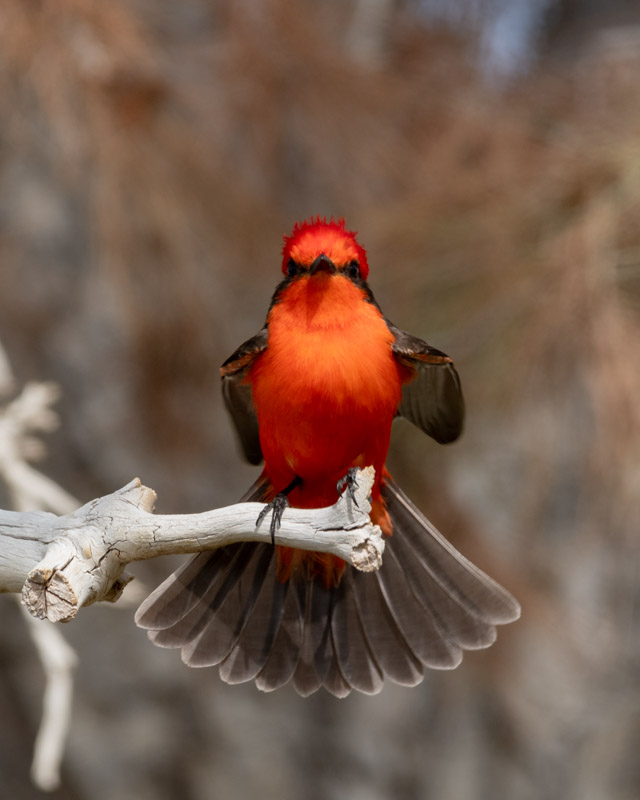
I can’t ever get tired of seeing Vermilion Flycatchers. Look for them at the edges of the nearest field and you will likely be rewarded!
